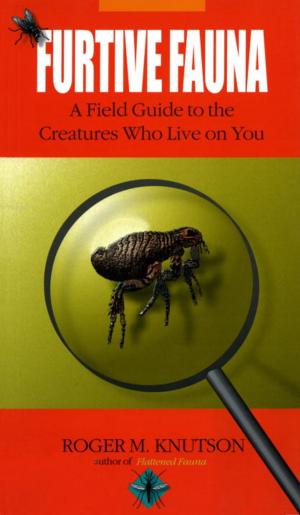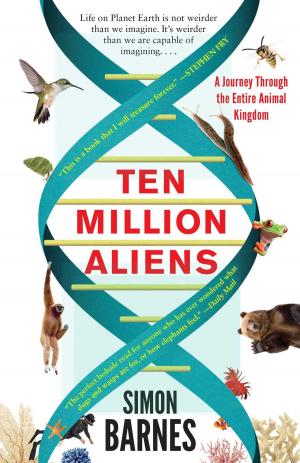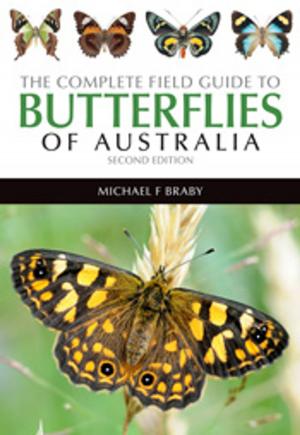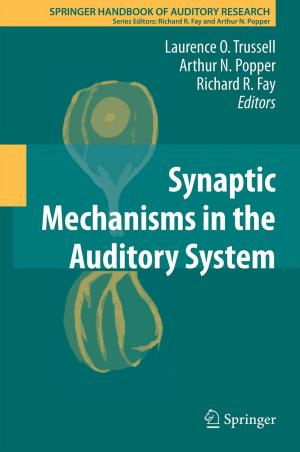Meet the Invertebrates: Anemones, Octopuses, Spiders, Ants, and Others
Nonfiction, Science & Nature, Science, Biological Sciences, Zoology| Author: | Katharine Rogers | ISBN: | 9781311443557 |
| Publisher: | Katharine Rogers | Publication: | June 16, 2014 |
| Imprint: | Smashwords Edition | Language: | English |
| Author: | Katharine Rogers |
| ISBN: | 9781311443557 |
| Publisher: | Katharine Rogers |
| Publication: | June 16, 2014 |
| Imprint: | Smashwords Edition |
| Language: | English |
It is easy for humans to relate to dogs or other mammals, difficult to see any kinship with flower-like anemones, supple octopuses, or many-legged spiders. Yet we are all animals that have to deal with the basic problems of living. Bodies need to be supported and muscles to pull against firm structures. Instead of skeletons, invertebrates use structures such as exoskeletons and cavities filled with fluid. All animals must catch their food, even if they are fixed in one place, digest their food, and get rid of wastes. All must reproduce their kind by finding mates and giving their offspring the necessary start in life. When crayfish moved from the sea to fresh water, they evolved special excretory organs to retain essential salts in their bodies, developed the ability to lie dormant during periods of drought or climatic extremes, and nurtured their young until they were mature enough to deal with 0the stress of living in fresh water. When spiders and insects moved onto the land, their permeable respiratory surfaces had to be enclosed within their bodies, and they evolved internal book lungs and tracheal systems that exchanged oxygen for carbon dioxide through small holes in their exoskeletons. Meet the Invertebrates introduces readers to representatives of the major invertebrate groups, with their wide range of life styles and the adaptations they have evolved to fit them -- the bath sponge, the giant green anemone, the beef tapeworm, the roundworm Ascaris, the common earthworm, the common sea star, the hard shell clam, the giant Pacific octopus, the red swamp crayfish, the garden spider, the German cockroach, the spicebush swallowtail butterfly, and the little black ant.
Meet the Invertebrates explains how these animals “work” physiologically and, in the case of higher invertebrates, psychologically. It describes the animals from a subjective as well as an objective point of view – how they look and behave, live their everyday lives, and perceive the world. An octopus sees the world with eyes much like our own; a spider senses it through legs that detect the minutest vibrations on her web; an ant uses her antennas to smell and feel her nestmates, other animals, and her environment. The book progresses from a sponge, as simple as an animal can be, to the highly developed octopus and ant. When a sponge is subjected to a poke or a chemical stimulus, the particular cells affected react individually. Cnidarians such as anemones evolved nerve cells specialized to receive information and convey it relatively fast, but these are simply connected on a loose network. Flatworms evolved a tiny brain to direct their activities. Octopuses have a large brain with over 30 specialized lobes. They show curiosi-ty and can solve complicated problems; one taught herself to open a child-proof pill bottle in 5 minutes.
The scientific classification given at the end of each chapter shows how the subject fits into the animal kingdom. This is followed by a sampling of human reactions to these animals, from Victor Hugo’s horror of the octopus to Maurice Maeterlinck’s glowing praise of the ant’s courage, generosity and altruism.
It is easy for humans to relate to dogs or other mammals, difficult to see any kinship with flower-like anemones, supple octopuses, or many-legged spiders. Yet we are all animals that have to deal with the basic problems of living. Bodies need to be supported and muscles to pull against firm structures. Instead of skeletons, invertebrates use structures such as exoskeletons and cavities filled with fluid. All animals must catch their food, even if they are fixed in one place, digest their food, and get rid of wastes. All must reproduce their kind by finding mates and giving their offspring the necessary start in life. When crayfish moved from the sea to fresh water, they evolved special excretory organs to retain essential salts in their bodies, developed the ability to lie dormant during periods of drought or climatic extremes, and nurtured their young until they were mature enough to deal with 0the stress of living in fresh water. When spiders and insects moved onto the land, their permeable respiratory surfaces had to be enclosed within their bodies, and they evolved internal book lungs and tracheal systems that exchanged oxygen for carbon dioxide through small holes in their exoskeletons. Meet the Invertebrates introduces readers to representatives of the major invertebrate groups, with their wide range of life styles and the adaptations they have evolved to fit them -- the bath sponge, the giant green anemone, the beef tapeworm, the roundworm Ascaris, the common earthworm, the common sea star, the hard shell clam, the giant Pacific octopus, the red swamp crayfish, the garden spider, the German cockroach, the spicebush swallowtail butterfly, and the little black ant.
Meet the Invertebrates explains how these animals “work” physiologically and, in the case of higher invertebrates, psychologically. It describes the animals from a subjective as well as an objective point of view – how they look and behave, live their everyday lives, and perceive the world. An octopus sees the world with eyes much like our own; a spider senses it through legs that detect the minutest vibrations on her web; an ant uses her antennas to smell and feel her nestmates, other animals, and her environment. The book progresses from a sponge, as simple as an animal can be, to the highly developed octopus and ant. When a sponge is subjected to a poke or a chemical stimulus, the particular cells affected react individually. Cnidarians such as anemones evolved nerve cells specialized to receive information and convey it relatively fast, but these are simply connected on a loose network. Flatworms evolved a tiny brain to direct their activities. Octopuses have a large brain with over 30 specialized lobes. They show curiosi-ty and can solve complicated problems; one taught herself to open a child-proof pill bottle in 5 minutes.
The scientific classification given at the end of each chapter shows how the subject fits into the animal kingdom. This is followed by a sampling of human reactions to these animals, from Victor Hugo’s horror of the octopus to Maurice Maeterlinck’s glowing praise of the ant’s courage, generosity and altruism.















